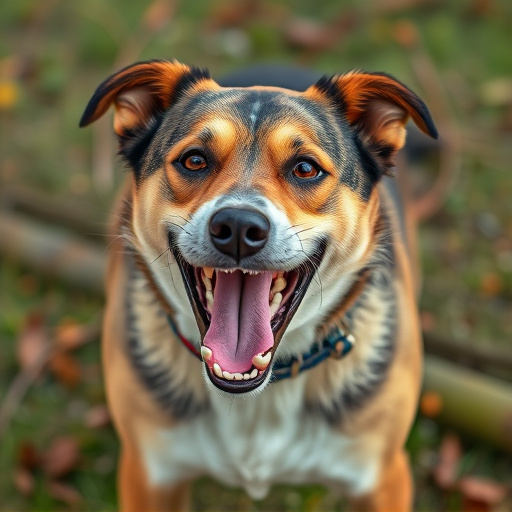Dog repellent spray training exercises require consistency, patience, and positive reinforcement to teach canines to avoid specific behaviors. Use a 10-20 feet range, consider spray concentration, frequency of use, and weather conditions. Start with basic obedience commands, gradually increase intensity, and simulate attacks. Prioritize safety by wearing protective gear, avoiding direct face spraying, and securing storage. Understand local laws, adhere to guidelines, and practice regularly for effective animal control using dog repellent spray training exercises.
Animal control pepper spray is a powerful tool for managing aggressive dogs, but understanding its effectiveness and safe application is crucial. This comprehensive guide explores dog repellent spray basics, helping you choose the right range for your needs. Learn about effective training exercises to condition dogs against spraying, along with essential safety precautions. We also delve into legal considerations, ensuring responsible use of animal control pepper spray.
- Understanding Dog Repellent Spray Basics
- Choosing the Right Pepper Spray Range
- Effective Training Exercises for Dogs
- Safety Precautions When Using Pepper Spray
- Legal Considerations for Animal Control Spray
Understanding Dog Repellent Spray Basics
Dog repellent spray is a safe and effective tool for training your canine companion. It’s important to understand that this method isn’t about punishment; instead, it’s designed to teach dogs what behaviors avoid a mild but unpleasant sensation. Dog repellent sprays are typically made with natural ingredients like capsaicin, the compound found in chili peppers, which triggers a temporary irritation without causing harm.
When incorporating dog repellent spray into training exercises, consistency is key. Start by introducing the spray in a controlled environment, creating an association between the scent and a specific unwanted behavior. Gradually increase the intensity of the spray as your dog learns to respond appropriately. Regular practice sessions will reinforce positive behaviors, helping your dog understand what actions avoid the spray. Remember, effective training requires patience and positive reinforcement alongside the use of repellent spray.
Choosing the Right Pepper Spray Range
Choosing the right pepper spray range for animal control involves understanding your needs and the intended target. For dog repellent spray training exercises, a shorter range of 10-20 feet is often ideal. This allows trainers to accurately apply the spray while maintaining safety, as it covers the dog’s line of sight without causing indiscriminate spraying on bystanders or the trainer themselves.
When selecting a pepper spray for animal control, consider factors such as concentration, usage frequency, and weather conditions. Higher concentrations are effective against larger animals but require more caution. Regular use necessitates frequent replacement to ensure potency. Weather can also impact performance; harsh conditions may reduce spray effectiveness. Incorporating dog repellent spray training exercises with the right range and considerations in mind will enhance safety and efficacy during animal control operations.
Effective Training Exercises for Dogs
Training your dog to react appropriately to a dog repellent spray is crucial for effective animal control. Start with basic obedience commands like “sit” and “stay” before introducing the spray. Positive reinforcement techniques, such as rewarding good behavior with treats or praise, can help motivate your dog during training exercises. Practice in controlled environments, gradually increasing the intensity of stimuli to simulate real-world scenarios.
Incorporate simulated attacks from other dogs or individuals to teach defensive behaviors using the spray. Always ensure safety during these exercises and consult a professional trainer for guidance. Regular repetition is key to ingraining these protective responses, making your dog more confident and less reactive in potential confrontations, thereby enhancing overall animal control measures.
Safety Precautions When Using Pepper Spray
When using animal control pepper spray, safety should be the top priority. Always ensure that you are in a well-ventilated area and wear protective clothing, including gloves and eye protection. Pepper spray can cause severe irritation to eyes, skin, and respiratory systems, so it’s crucial to follow manufacturer guidelines for safe use. Avoid aiming directly at faces or sensitive areas, as this could result in serious harm. Keep the spray out of reach of children and pets, and store it in a secure location away from direct sunlight or extreme temperatures.
During training exercises with dog repellent spray, safety procedures are even more critical. Familiarize yourself with the spray’s activation mechanism to avoid accidental discharge. Practice proper handling techniques during mock scenarios to ensure you can effectively deploy the spray when needed. Remember that consistent and controlled use of pepper spray during training can help animals associate it with negative experiences, potentially deterring future unwanted behaviors. Incorporate these safety precautions into your routine to guarantee responsible and effective animal control practices.
Legal Considerations for Animal Control Spray
When considering using animal control pepper spray, it’s crucial to understand the legal implications in your area. Laws surrounding dog repellent sprays vary widely, with some regions permitting their use only for specific purposes like crowd control or by authorized personnel, while others may have more lenient regulations. Before deploying any type of spray, consult local ordinances and seek guidance from law enforcement agencies to ensure compliance.
Training exercises involving Dog Repellent Spray should always prioritize safety first. It’s essential to follow manufacturer instructions carefully and conduct practice sessions in controlled environments. Incorporating these training exercises into your routine can help familiarize both animals and handlers with the spray’s effects, enhancing its effectiveness as a deterrent while minimizing potential harm or accidental misuse.
When it comes to animal control, pepper spray can be an effective tool for managing and training dogs. By understanding the basics of dog repellent spray, selecting the appropriate range, implementing safe training exercises, and adhering to legal considerations, you can ensure responsible and successful use. Remember, proper training exercises are key to harnessing the power of pepper spray while maintaining a safe and positive relationship with your canine companion.
